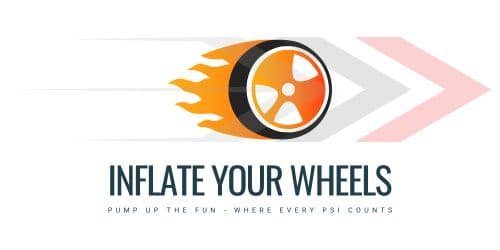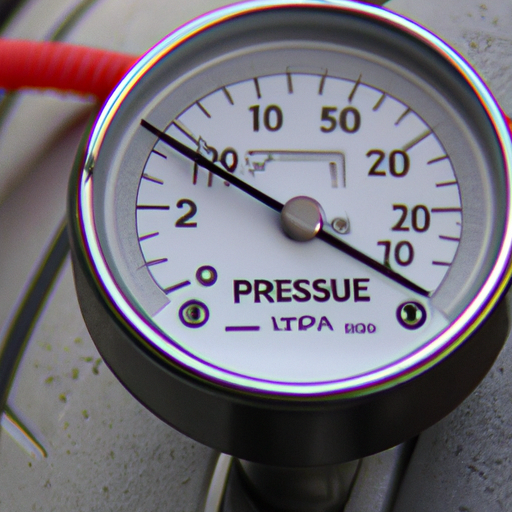When it comes to maintaining your vehicle, one aspect that often gets overlooked is the tire pressure. Keeping your car tires properly inflated not only ensures a smoother ride but also plays a crucial role in your safety on the road. But how do you know when to inflate your car tires? Understanding the signs that indicate low or high tire pressure is key in preventing potential issues and extending the lifespan of your tires. In this article, we will explore the telltale signs that prompt you to check and inflate your car tires, ensuring a safer and more enjoyable driving experience.
When To Inflate Car Tires
Table of Contents

Importance of Proper Tire Inflation
Enhanced Safety
Ensuring proper tire inflation is crucial for maintaining a safe driving experience. When your tires are correctly inflated, they provide optimal traction and stability on the road. This greatly reduces the risk of accidents, especially during adverse weather conditions or when navigating through challenging terrains.
Improved Fuel Efficiency
Properly inflated tires also contribute to improved fuel efficiency. When your tires are underinflated, it causes unnecessary rolling resistance, meaning your vehicle has to work harder to move forward. This extra effort results in increased fuel consumption and decreased mileage. By keeping your tires properly inflated, you can save money on fuel expenses and reduce your carbon footprint.
Extended Tire Lifespan
Another key benefit of maintaining proper tire inflation is an extended tire lifespan. Underinflated tires are subject to excessive wear and tear, particularly on the edges. This wear pattern reduces the overall lifespan of the tires, leading to the need for more frequent replacements. By regularly checking and maintaining proper tire pressure, you can maximize the lifespan of your tires, saving you money in the long run.
Better Vehicle Performance
Proper tire inflation is essential for optimal vehicle performance. Underinflated tires can negatively impact your vehicle’s handling, making it feel sluggish and unresponsive. On the other hand, overinflated tires can result in a firm and uncomfortable ride. By maintaining the recommended tire pressure, you can ensure smooth and precise handling, promoting a comfortable driving experience and better overall vehicle performance.
Factors Affecting Tire Pressure
Temperature Changes
Temperature fluctuations can significantly affect tire pressure. As temperatures rise, the air inside the tires expands, causing an increase in tire pressure. Conversely, during colder weather, the air contracts, resulting in decreased tire pressure. It is important to monitor and adjust tire pressure accordingly to accommodate these temperature changes.
Driving Conditions
Different driving conditions can also impact tire pressure. Rough terrains, potholes, and uneven surfaces can cause tires to lose pressure more quickly. Frequent off-roading or driving on bumpy roads may necessitate more frequent tire pressure checks and adjustments to ensure optimal performance and safety.
Tire Type and Size
The type and size of your tires can also influence tire pressure. Different tire models and sizes come with specific recommended pressure ranges. It is essential to refer to the manufacturer’s guidelines to determine the appropriate tire pressure for your specific tire type and size. Ignoring these recommendations can compromise performance and safety.
Vehicle Load
The weight that your vehicle carries can also affect tire pressure. Heavier loads exert more pressure on the tires, necessitating higher tire pressures to support the weight adequately. Before embarking on a road trip or carrying heavy cargo, it is important to check your tire pressure and adjust accordingly to prevent underinflation.
Checking Tire Pressure
Frequency of Inspection
Regularly inspecting your tire pressure is a vital aspect of proper tire maintenance. Ideally, you should check your tire pressure at least once a month. Additionally, it is advisable to inspect your tires before embarking on long road trips, after significant temperature fluctuations, or if you notice any signs of tire deflation.
Using a Tire Pressure Gauge
To check your tire pressure accurately, you will need a tire pressure gauge. These affordable and easily portable tools measure the air pressure inside your tires. Simply remove the valve cap, attach the gauge to the valve stem, and note the reading displayed. Compare the reading to the recommended pressure range stated in your vehicle’s manual or on the tire placard located on the driver’s side door jamb.
Referring to the Vehicle’s Manual
Your vehicle’s manual is an invaluable resource when it comes to tire maintenance. It provides specific recommendations regarding tire pressure, as well as helpful tips for maintaining your tires in optimal condition. Always refer to the manufacturer’s guidelines when checking and adjusting tire pressure.
Ensuring Optimal Tire Pressure
When checking tire pressure, ensure that it aligns with the recommended pressure specified by the manufacturer. If the pressure is below the recommended range, add air until it reaches the appropriate level. If the pressure is above the recommended range, release some air until it falls within the desired range. Remember to replace the valve caps securely after adjusting tire pressure to prevent any air leakage.
Signs of Underinflation
Visual Inspection
A visual inspection can help identify signs of underinflated tires. Look for any noticeable bulges or deformities, as these can indicate low tire pressure. Additionally, if the tire looks noticeably flattened or lacks its usual round shape, it is likely underinflated.
Poor Fuel Efficiency
One of the most telling signs of underinflated tires is poor fuel efficiency. If you notice that you are filling up your gas tank more frequently than usual, it could be a sign that your tires are not properly inflated. Underinflated tires increase rolling resistance, causing your vehicle to work harder and burn more fuel to maintain speed.
Uneven Tire Wear
Underinflation can lead to uneven tire wear. When tires are not inflated to the correct pressure, the tread wears out unevenly. This results in localized areas of tire fatigue, reducing the overall lifespan of your tires and compromising their grip on the road. Regularly inspecting your tires for signs of uneven wear can indicate the need for proper inflation.
Vehicle Handling Issues
Driving with underinflated tires can lead to noticeable vehicle handling issues. If your vehicle feels less responsive or less stable while driving, it could be a sign of low tire pressure. Factors such as increased stopping distances, difficulty steering, or a general lack of control may indicate that your tires are not properly inflated.
Signs of Overinflation
Visual Inspection
A visual inspection can also help identify signs of overinflated tires. Overinflation can cause the tire to look excessively rounded and bulging at the center. If the tire appears to be overinflated, it is important to release some air until the tire achieves the optimal pressure.
Rough Ride
Overinflation can result in a rough and uncomfortable ride. The increased tire pressure can make your vehicle feel overly bumpy and harsh, compromising overall ride comfort. If you notice that your ride has become more uncomfortable than usual, it could be an indication that your tires are overinflated.
Increased Road Noise
When tires are overinflated, they tend to produce more road noise. If you notice an increase in the level of road noise while driving, it may be worth checking your tire pressure. Overinflated tires have less contact with the road surface, resulting in increased vibrations and noise transmission.
Excessive Center Tread Wear
Overinflated tires are prone to excessive center tread wear. The increased pressure on the center portion of the tire causes it to wear down more quickly compared to the outer edges. If you regularly inspect your tires and notice excessive tread wear in the center, it is a sign that your tires may be overinflated.
Ideal Tire Pressure
Manufacturer’s Recommendations
To determine the ideal tire pressure for your vehicle, always refer to the manufacturer’s recommendations. These guidelines take into account the specific tire type, size, and vehicle model to provide the optimal pressure range. The manufacturer’s recommendations can usually be found in your vehicle’s manual or on the tire placard located on the driver’s side door jamb.
Adjusting for Driving Conditions
In addition to the manufacturer’s recommendations, it is important to consider the driving conditions you typically encounter. Certain driving conditions, such as off-roading or driving on rough terrains, may require slightly different tire pressures to ensure optimal performance and safety. Always adjust the tire pressure within the recommended range based on the driving conditions you anticipate.
Considering Vehicle Load
If you frequently carry heavy loads or passengers in your vehicle, it is crucial to consider the weight when determining tire pressure. Heavier loads exert more pressure on the tires, requiring higher tire pressures to adequately support the weight. Refer to the manufacturer’s guidelines for recommended tire pressures when carrying heavy loads.
Compensating for Temperature
As mentioned earlier, temperature fluctuations can affect tire pressure. When temperatures rise, tire pressure increases, and when temperatures drop, tire pressure decreases. It is important to compensate for these temperature changes by adjusting tire pressure accordingly. The recommended tire pressure provided by the manufacturer is typically based on average temperatures, so adjustments may be necessary during extreme weather conditions.
When to Inflate Car Tires
Regular Maintenance Schedule
To ensure optimal tire performance and safety, it is advisable to include tire pressure checks in your regular maintenance schedule. Set a monthly reminder to inspect your tire pressure and make any necessary adjustments. Regular maintenance will help prevent underinflation and overinflation, promoting longer tire lifespan and better overall vehicle performance.
After Temperature Fluctuations
Temperature fluctuations can have a significant impact on tire pressure. After experiencing extreme temperature changes, such as driving from a cold climate to a hot one or vice versa, it is essential to check and adjust tire pressure. This will ensure that your tires are at the optimal pressure for safe and efficient driving.
Before Long Road Trips
Before embarking on a long road trip, it is important to check and adjust your tire pressure. Long hours of driving, especially on highways, increase the heat buildup within the tires. This can cause tire pressure to increase, potentially leading to overinflation. By ensuring the correct tire pressure before your journey, you can enhance safety and maintain optimal vehicle performance throughout your trip.
When Tires Appear Deflated
If you visually notice that your tires appear deflated or flattened, it is crucial to check and adjust the tire pressure immediately. Driving on underinflated tires can be dangerous, as it compromises your vehicle’s handling and increases the risk of blowouts. Promptly inflate the tires to the recommended pressure to restore their functionality and safeguard your safety on the road.
Avoiding Overinflation and Underinflation
Checking Tire Pressure Regularly
A key aspect of avoiding overinflation and underinflation is regular tire pressure checks. Regular inspection allows you to identify any deviations and make the necessary adjustments promptly. By incorporating tire pressure checks into your routine maintenance schedule, you can proactively address any potential issues and maintain optimal tire inflation.
Using an Accurate Tire Pressure Gauge
To ensure accurate tire pressure readings, it is essential to use a reliable and accurate tire pressure gauge. Cheap or worn-out gauges may provide inaccurate readings, leading to incorrect inflation levels. Invest in a good-quality tire pressure gauge and keep it in your vehicle for convenient and accurate readings.
Avoiding Excessive Inflation
Overinflating tires can lead to reduced traction, uneven wear, and an uncomfortable ride. It is important to avoid excessive inflation by adhering to the manufacturer’s recommended pressure guidelines. Ensure that you release any excess air if you accidentally overinflate your tires.
Addressing Underinflated Tires Promptly
Underinflated tires are more prone to punctures, blowouts, and increased fuel consumption. It is crucial to address underinflated tires promptly by adding the necessary amount of air. Regularly inspect your tires for signs of underinflation to identify and rectify any issues before they escalate.
Tips for Proper Tire Inflation
Use the Correct Tire Pressure
Always use the correct tire pressure recommended by the manufacturer. This information can be found in your vehicle’s manual or on the tire placard. Using the correct tire pressure ensures optimal performance, safety, and fuel efficiency.
Check Tire Pressure When Cold
Tire pressure should be checked when the tires are cold, preferably before driving for extended periods. As you drive, friction causes the tires to heat up and the pressure to increase. Cold tire pressure readings provide a more accurate representation of the true pressure.
Inflate Tires to the Recommended PSI
Ensure that you inflate your tires to the recommended PSI (pounds per square inch) specified by the manufacturer. Overinflating or underinflating tires can have adverse effects on safety, performance, and tire wear. Follow the manufacturer’s guidelines to maintain optimal tire pressure.
Monitor Tire Pressure Regularly
Regularly monitor your tire pressure using a tire pressure gauge. Make it a habit to check your tire pressure at least once a month, or more frequently if you notice any irregularities. Regular monitoring helps prevent long-term damage and ensures your tires are always properly inflated.
Conclusion
Maintaining proper tire pressure is essential for your safety, vehicle performance, and tire longevity. By understanding the importance of proper tire inflation, the factors that affect tire pressure, and the signs of underinflation and overinflation, you can proactively take care of your tires. Remember to regularly check your tire pressure using a reliable gauge, refer to the manufacturer’s recommendations, and adjust for driving conditions and temperature changes.
By following these tips and guidelines, you can ensure a safer, more fuel-efficient, and comfortable driving experience. Don’t overlook the significance of maintaining adequate tire pressure, as it ultimately contributes to your overall safety and driving satisfaction.

Keep your car tires in peak condition with the right inflator.
Discovering the best tire inflator can be a game-changer for maintaining your vehicle. Explore our comprehensive Ultimate Guide to the Best Tire Inflators to make an informed decision.

